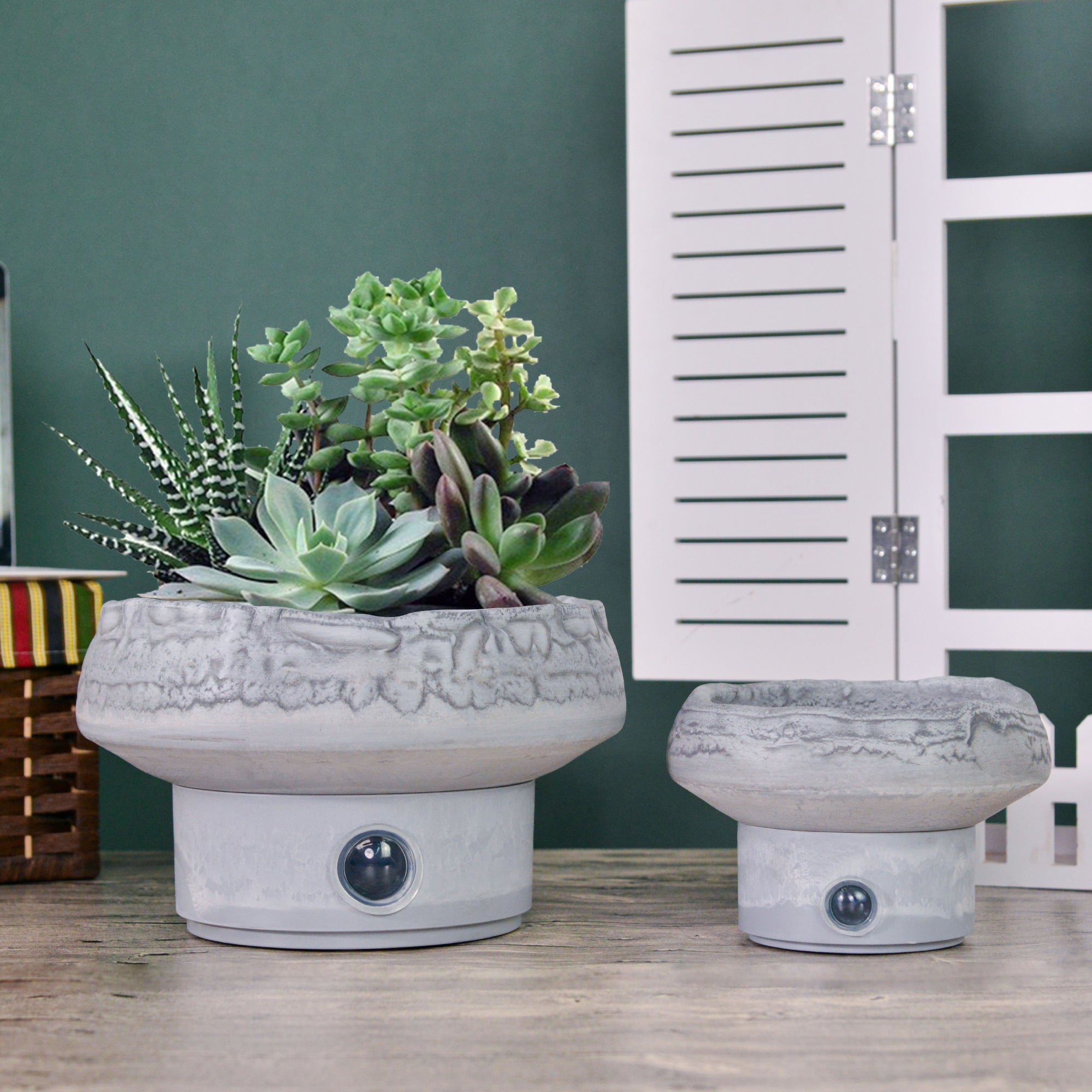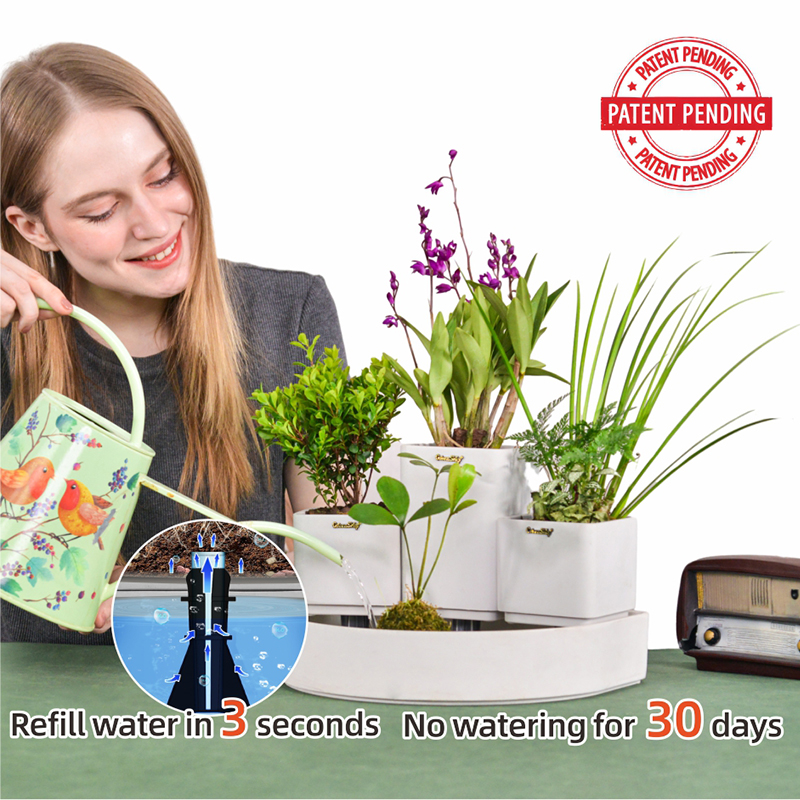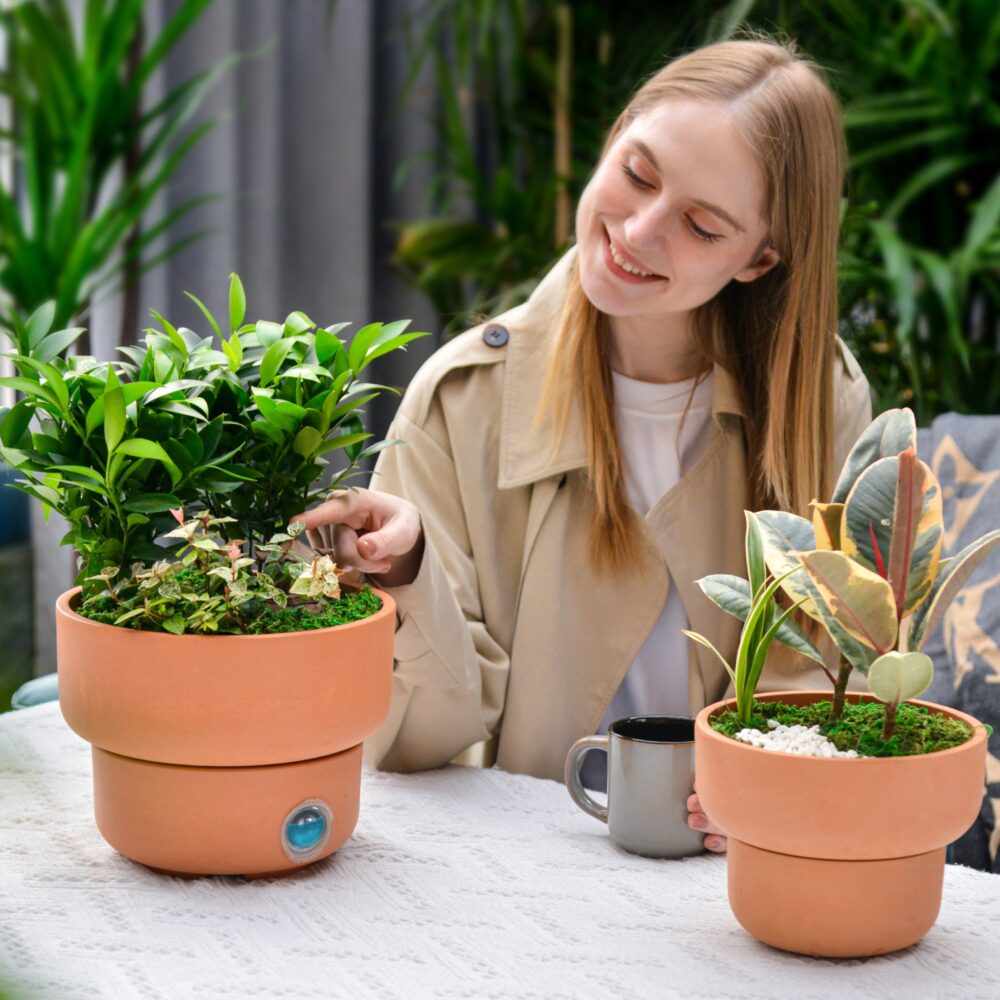Is a Self-Watering Planter Good for Your Plant?
Self-watering planters have become increasingly popular for their convenience and ability to maintain consistent soil moisture. While they can be highly beneficial for many plants, their effectiveness depends on the type of plant and how the planter is managed.
Benefits of Self-Watering Planters
- Reduced Watering Frequency
- Self-watering planters significantly cut down on the need for frequent watering.
- They maintain a consistent water supply, ensuring the soil doesn’t dry out completely.
- Ideal for busy individuals or those who travel often, as these planters can keep plants hydrated for extended periods.
- Healthier Plants
- By minimizing the risk of overwatering, self-watering planters help prevent root rot, a common issue for indoor plants.
- Consistent moisture levels promote robust root development and healthier, more vibrant plants.
- Improved Growth
- Plants thrive when they have steady access to water, which can lead to more uniform and vigorous growth.

Considerations and Potential Challenges
While self-watering planters offer many advantages, there are a few considerations to keep in mind:
- Not Suitable for All Plants
- Some plants, like succulents, cacti, and other drought-tolerant species, prefer dry soil and may suffer in consistently moist conditions.
- Plants that require a drying-out period between waterings may not thrive in self-watering planters.
- Risk of Overwatering
- Improper use, such as overfilling the reservoir or using poorly draining soil, can result in waterlogged conditions.
- Stagnant water in the reservoir can promote fungal and bacterial growth if not cleaned regularly.

Maximizing the Benefits of Self-Watering Planters
To ensure your plants thrive in a self-watering system, follow these best practices:
- Select Suitable Plants
- Choose plants that prefer consistently moist soil, such as herbs, tropical houseplants, and certain vegetables.
- Use Well-Draining Soil
- Opt for a high-quality potting mix designed for containers, often containing perlite, vermiculite, or coconut coir to improve drainage and aeration.
- Monitor Soil Moisture
- Regularly check the soil to ensure it isn’t overly saturated.
- Allow the reservoir to dry out occasionally to prevent excess moisture buildup.
- Maintain the Reservoir
- Clean the reservoir regularly to prevent algae, bacteria, and fungal growth that could harm plant roots.
- Follow Manufacturer Guidelines
- Always adhere to the specific instructions provided with your self-watering planter for optimal results.

Conclusion
Self-watering planters are an excellent choice for many indoor and outdoor plants, offering convenience, reduced watering frequency, and healthier growth. However, they require proper use and maintenance to ensure success. By selecting the right plants, monitoring moisture levels, and maintaining the planter, you can enjoy the benefits of this innovative gardening tool while keeping your plants in optimal health.
Self Watering Planters, 6 8 12 inches Set of 3 Planter, Modern Decorative Flower Pots for Indoor Plants with Self Wicking Stand
By greenship-seo|2025-04-10T08:34:57+00:00January 6, 2025|Categories: HomeOasis Self-Watering System|Tags: Decorative Flower Pots, Self-Watering Pots|
23TB
By greenship|2024-03-26T01:15:31+00:00March 25, 2024|Categories: HomeOasis Self-Watering System|
Self-Watering Plant Pot Set of 2, Round Planter for Indoor Plants with Self Wicking Stand, Modern Decorative Flower Pots
By greenship-seo|2025-04-10T08:35:28+00:00January 6, 2025|Categories: HomeOasis Self-Watering System|Tags: Decorative Flower Pots, Self-Watering Pots|



